HRSS specializes in engineered fire alarm system sales, service and inspection as well as commercial security alarm systems.
Don't wanna be here? Send us removal request.
Text
Fire-Lite Addressable Fire Alarm Control Panels

Fire-Lite® Alarms is part of the Honeywell Group, recognized for producing superior fire, life and safety systems used worldwide. Fire-Lite was founded in 1952 and was the first company to bring addressable fire alarm control panels to market. Fire-Lite is one of the best known names in fire safety, manufacturing fire alarm systems, control communicators, annunciators, evacuation products and remote power supplies.
Next Generation Fire-Lite Addressable Fire Alarm Control Panels
Fire-Lite announced in early 2018, the availability of their next generation of addressable fire alarm control panels which are designed to provide additional options when designing small to mid-sized fire alarm systems. The newest Endurance Series of Fire-Lite addressable fire alarm control panels includes the ES-50X and the ES-200X featuring built-in dual path communications, combined carbon monoxide (CO) and fire detection with programmable buttons. The ES-50X supports up to 50 devices while the ES-200X supports connecting up to 198 addressable devices. The MS-9600LS/MS 9600UDLS is a Fire-Lite addressable fire alarm control panel with 318 points which includes the Digital Alarm Communicator – Transmitter, (DACT-UD2). This control panel gives the option expanding up to 636 addressable points and also includes the option for an additional Signaling Line Circuit, (SLC-2LS).
Addressable Fire Alarm System Annunciators, Accessories and Communicators
Fire-Lite by Honeywell offers addressable fire alarm control panels with varying sizes and functionalities, providing versatility to meet a wide range of fire and safety needs. Fire-Lite offers a complete line of annunciators, accessories and communicators. Communication products by Fire-Lite are compatible with most fire alarm control panels with various options for connectivity including GSM, IP and telephone service. On site or offsite monitoring with a central station or remote station is available.
High Rise Security Systems Offers Addressable Fire Alarm Control Panels
High Rise Security Systems is a premier distributor for the best names in fire safety manufacturers such as Notifier and Fire-Lite by Honeywell. Fire-Lite addressable fire alarm control panels offer fire detection and protection with versatility and reliability. HRSS is experienced in all types of fire and safety equipment including addressable fire alarm control panels and components. HRSS provides UL listed equipment and experienced fire system design, testing, inspection, maintenance and monitoring. We help to protect many properties in and around Chicago including school campuses, medical complexes, hotels, hospitals and various commercial properties. Contact us to learn more about our fire and safety system services and equipment including Fire-Lite addressable fire alarm control panels. Read the full article
0 notes
Text
NFPA 96: Commercial Cooking Equipment Update

NFPA 96 is the Standard for Ventilation Control and Fire Protection of Commercial Cooking Operations, recently receiving a commercial cooking equipment update to the 2017 Edition. NFPA 1, Chapter 50 addresses the design, installation, inspection, maintenance and operational standards for all public commercial cooking equipment as well as private cooking equipment when used in commercial operations such as college dorms or nursing homes. With recent updates in 2018, NFPA 1, Ch. 50, mobile and temporary cooking operations are also included. Annex B is added to the most recent 2017 NFPA 96: commercial cooking equipment update related to mobile and temporary cooking operations. While the standard is written in mandatory requirements, enforcement is intended to be on a voluntary basis or as adopted by the authority having jurisdiction. The Annex includes new requirements on the procedures for the inspection, testing, maintenance and use of equipment. Also included in the Annex are the requirements for hoods, clearance, ducts, fire extinguishing systems, LP-gas, generators, location, carbon monoxide detectors, terminations and training. One noticeable change with the 2017 edition of NFPA 96 is the requirement on the frequency of employee training on activating the fire extinguishing system and the use of portable fire extinguishers. Industry studies revealed that employees in many cooking facilities had not received the proper instruction or had forgotten their training which resulted in an inadequate response to a fire.
How Owners Can Stay Compliant to NFPA 96: Commercial Cooking Equipment Update
Owners are ultimately responsible for meeting all provisions of the standard which includes maintaining all cooking equipment, fans, ducts, hoods and fire extinguishing equipment. Owners are also responsible to ensure that the entire facility is maintained and the proper level of protection is provided. This includes responsibility for the testing, inspection, cleanliness and maintenance of the fire protection and ventilation control of the entire commercial cooking operation. Owners can maintain compliance by following a few simple steps, which include: 1) Review Section 4.2 of NFPA 96: Commercial Cooking Equipment Update. Exhaust fans, hoods, ducts and grease removal devices must have a clearance of at least 18 inches to combustible materials and 3 inches to limited combustible material. 2) Clean: keeping your cooking area clean is critical to preventing fires as one in five cooking fires had lack of cleanliness as a contributing factor to the fire, causing ignition. Cleaning is important to mitigating risk of fire. 3) Train: all employees should be thoroughly trained on the use of fire extinguishing equipment. Employees must be aware the location of emergency pull stations, portable fire extinguishers, the fire alarm system and how to use them. 4) Inspect, Maintain and Test all Equipment: internal inspections should be performed on a daily basis with employees trained on inspecting cooking equipment, heaters and oil in deep fryers. If the oil level is too low, the heating coil may be exposed allowing residue oil to catch fire. Inspections for grease buildup by a trained, qualified and certified fire inspector acceptable to the AJH is required at specific intervals depending on the type of cooking operation. Inspection Requirements from Certified Inspectors Systems serving solid fuel cooking operations-Monthly High volume cooking operations-Quarterly Moderate volume cooking operations-Semi-Annually Low volume cooking operations-Annually HRSS Offers Certified Inspections of Cooking Equipment HRSS is a certified and licensed fire and safety systems provider, with in-depth knowledge of NFPA standards including NFPA 96: Commercial Cooking Equipment Update. We perform inspections on fire suppression equipment to ensure that your operation is code compliant with all local, state and federal regulations. We perform inspections, testing and maintenance to ensure the safety and protection from fire in your cooking operation. High Rise Security Systems is a leading fire and safety systems specialists, serving all commercial properties in and around Chicago. We offer fire alarm system design, inspection, maintenance, testing, repairs and monitoring 24/7/365. Contact us today to learn more about NFPA code requirements for your operation including the latest updates to NFPA 96. Read the full article
0 notes
Text
MACURCO Gas Detection

CM-E1 CM-E1 is a low voltage Carbon Monoxide (CO) detector that is designed to connect to an UL Listed Fire Alarm/Burglar Control Panel. UL standard 2075 for the Safety for Gas, Vapor Detector and Sensors. Also tested to UL 2075 using UL 2034 Sensitivity limits for carbon monoxide gas. CM-6 or CM-12 Both the CM-6 and CM-12 are low voltage, dual rely Carbon Monoxide (CO) detectors, controllers and transducers. They use electronic detection to measure the concentration of CO to provide feedback to activate automatic exhaust fans or valve controls to reduce the CO concentrations in parking garages, maintenance facilities or other commercial settings. 12 Series Data Sheet CM-6 Data Sheet CM-E1 Data Sheet Read the full article
0 notes
Text
Navy Pier’s Chicago Shakespeare Theater- The Yard

The Chicago’s Shakespeare Theater came to Navy Pier in 1999 after performing at the Ruth Page Theater since 1986. Since then they have offered over 650 performances that are available year-round. They engage and cater to local students and guests from around the world. Last year they unveiled The Yard in which we, High Rise Security Systems, had the pleasure of being a part of. It is a state-of-the art theater unlike any other. It can hold up to 850 guests and has three story tall seating towers which are totally flaccid. The seating towers can be transformed into whatever the performance calls for. This is unique because no matter the configuration of seating, the fire alarm system can supervise and provide emergency communication in any configuration. While working on this project, four elements of fire protection and notification came into consideration: Optimizing reliable fire protection requirements without causing false alarm signals, especially with the use of theatrical smoke during performances. Maintaining proper heating and cooling of 10-ton HVAC units without shutting down HVAC fans during performances. Supervising the position of three story seating towers for proper sprinkler fire protection connections when the towers were being repositioned. Providing direct line of sight of ADA strobes without interfering with show props based on selected seating positions. In summary, both the City of Chicago, ADA, NFPA, and the Shakespeare Theater’s needs were met to everyone’s satisfaction. As it has been said, “The show must go on!” Read the full article
0 notes
Text
Ground Fault: Your Fire Panel May Not Be Protected!
You must pay attention to trouble signals resulting from ground fault error messages. Even though your fire panel is working under this condition it is subject to internal electronic failure-no fault of the equipment. There are many reasons why fire alarm system wiring is monitored for ground fault. Here are a few points to consider. Firstly, what is a ground fault? A ground fault signal is when a wire has made contact with another electrical circuit or ground affecting its normal operating voltage, resistance, current and communication wave forms.

This ground fault condition could result in external voltage linking itself to a protected circuit either fully or partially through low or high resistive pathways. This grounding can occur through metallic conduits, electrical boxes, or to the building’s metallic structure. Skinned wires can cause a direct short, while crushed pinched or water soaked wires can cause low or high impedance grounds. Normally both the positive and negative leads, or a metallic shield surrounding communication circuits are sensitive to ground fault conditions.
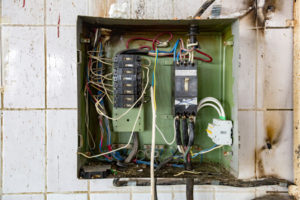
This is an unacceptable condition in a newly constructed fire alarm system. However, this is often found in existing or badly installed systems. We are all in agreement that fire alarm protection and the need for notification is a 24/7 function. These systems must be 100% functional and ready to act without notice. This is why these systems monitor wiring for ground fault. Normally a signal ground fault does not disable the fire alarm circuit. However, a multi-ground fault condition can disable an alarm circuit or notification circuit. This could be limited to a single circuit, a zone or building wide. The results of multiple grounds vary. So, if an initiation circuit is grounded the ability to detect an alarm event may become inoperable. If a notification circuit is in ground fault the ability to send audible, visual or mechanical warning tones may be incapacitated. Without a doubt, ground fault detection is important, and we want to pay attention and repair these conditions as soon as possible.

However, this is only part of the message. Ground fault and the time needed to repair ground fault leads to a system vulnerable to electrical damage. Equipment such as CPUs, Addressable Loop Boards (SLC), Microprocessor Power Supplies, Battery Chargers and Addressable Field Devices are susceptible to damage caused by external voltages or a voltage surge. Realize that the event of the ground fault will not damage the equipment. It is the fact that while in ground fault the equipment is exposed to another electrical path subject to electrical noise, stray voltages or voltage surges. It is this electrical noise, stray voltage or surge that damage the fire alarm equipment. Where do these voltages or signals come from? The utility company changing a transformer The utility company repairing service lines A brown out and voltage system trying to regulate A power surge, a day or night of storms with lightning Electrical mechanical equipment shutting down and starting up Careless contractors working on other systems (Elevators, HVAC, Sprinkler System, Fire Pump, Dampers) 120VAC power touching a conduit or building structure, or another low voltage system grounding to same conduits or circuits All these acts can damage the fire alarm system while the system sits in ground fault condition. So, in short, fix the ground faults as soon as possible. Your fire alarm system may not be protected and can lead to costly equipment replacement work. Read the full article
0 notes
Text
Benefits of Aspirating Smoke Detection
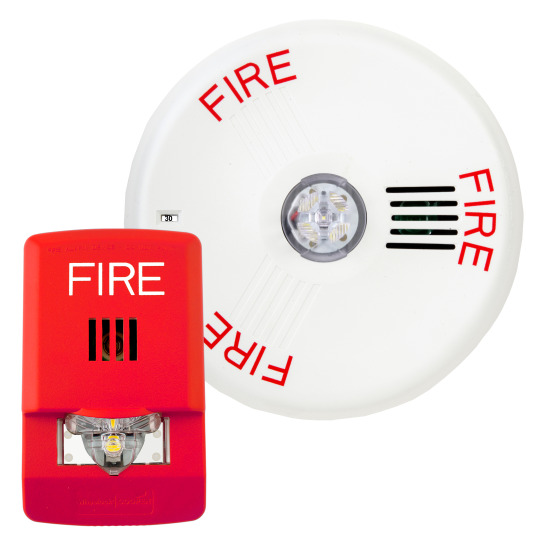
Aspirating smoke detection is a very reliable method of detecting smoke by using a sophisticated detector that recognizes the existence of smoke particles suspended in the air. An aspirating smoke detector (ASD), also called an air sampling smoke detector, will typically detect smoke before that is invisible to the naked eye by recognizing the light scattered by the smoke particles in the sampling chamber. An ASD works by drawing air with a fan through a piping system and into the sampling chamber.
National Fire Protection Association (NFPA) Code Requirements
An ASD system is required to meet National Fire Protection Association (NFPA) codes and regulations, including NFPA 72, the National Fire Alarm and Signaling Code. NFPA 72 requires the sampling holes to be spaced at equivalent configurations of spot smoke detectors, which are spaced at 30 feet with the ability to protect 900 square feet. Requirements for a Standard Fire Detection (SFD) system require maximum transport time of the furthest sampling hole to the ASD be no more than 120 seconds. ASD systems must also adhere to NFPA 75 and NFPA 76, which are the standards for the Protection of Information Technology Equipment and Fire Protection of Telecommunications Facilities, respectively. NFPA 76 details the regulations of more sensitive smoke detection systems that give early warning and are divided into two categories; the Early Warning Fire Detection (EWFD) system and a Very Early Warning Fire Detection (VEWFD) system. Regulations for the EWFD reduce the maximum transport time to 90 seconds, and the coverage area for a sampling hole is 400 square feet. Regulations for a VEWFD system are further reduced to a transport time of 60 seconds, with 200 square feet coverage for a single sampling hole. All ASD systems designed in the US must adhere to these codes which cover the commissioning, installation, and testing of aspirating smoke detection systems.
Components of an Aspirating Smoke Detector
An ASD system consists of three main components; the network of sampling pipes, the aspirating smoke detector, and the exhaust pipes.
Sampling Pipes of an ASD
The network of sampling pipes collect air through the sampling holes and deliver it to the detector to test for the presence of smoke particles. The network of sampling pipes can be made of plastic, copper or brass, and may be installed with single or multiple pipe configurations. Single pipe configurations may result in delayed transport time with one pipe extending throughout the covered space connecting to the detector. Multiple pipe configurations allow for either horizontal or vertical placement, and versatility in placing pipes in concealed locations.
Types of Aspirating Smoke Detectors
The aspirating smoke detector is available with different detection technologies, although all contain similar equipment. The three types of technologies are laser based, cloud chamber and dual sourced. Laser based systems are available in two variations, one with a filter and one without. In a filtered laser system, air passes through the filter system first to remove large particles, then is moved past the laser which measures the scatter of smoke particles caused by the laser light. A non-filtered laser system is also referred to as particle counting, with air passing in front of the laser without any filtration. The number of particles are counted by a sophisticated photo collector, and will alert if sufficient particles of smoke are present. The cloud chamber method of an ASD utilizes a sealed chamber holding dense water vapor that causes a reaction when interacting with smoke particles. This reaction causes the particles to ionize and become visible where the chamber will detect the mist and smoke particles. A dual source sensor is the third method of technology used in an ASD, utilizing a blue LED light to detect very low levels of smoke with an infrared laser that helps to identify dust particles preventing false alarms.
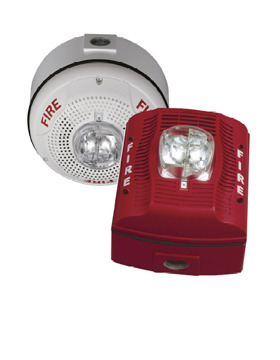
ASD Exhaust Piping
The exhaust system is a key component as the air pressure inside and outside of the pipes make a difference in how the air is transported to the testing chamber, and can affect the transport time. Sophisticated software is used to determine transport time, usually with the assumption that the air pressure is the same in the pipes as it is in the room the system is mounted. The exhaust air must be piped into the same room that is being sampled to eliminate differences in air pressure.
Several Benefits of an ASD
An aspirating smoke detection system provides several benefits which include the following: Provides an early warning of smoke before it is even visible to the human eye An ASD works even when the air handling system is not working Works well even in low air damper environments Easy accessibility for service and testing remote areas such as lofty ceilings without climbing ladders to maintain smoke detectors ASD systems are compatible with addressable and conventional fire alarm systems These are just some of the many benefits to an aspirating smoke detection system, which can provide very early warning of smoke or fire, saving lives and property. High Rise Security Systems is an experienced fire safety consulting firm with experience in ASD and all smoke and fire prevention systems. We provide total safety to all types of commercial properties including low-rise, high-rise, campuses and mass complexes. HRSS is a leader in fire and safety prevention, providing total system design compliant to all codes and regulations, including local municipalities including the Chicago area. Our experienced designers utilize AutoCAD software to provide a detailed layout of your ideal fire alarm system with the best names in the business for fire alarm systems and control panels such as Notifier® by Honeywell. We conduct testing, maintenance and monitoring 24/7/365 for total safety of your building and all occupants. HRSS is a leader in fire alarm safety, helping building owners and contractors to develop a total fire safety plan in any type of structure. Contact us today to learn more about our comprehensive fire and safety services, and to learn more about the early warning protection from an aspirating smoke detection system. Read the full article
0 notes
Text
Mass Notification Systems Much More Than an Alarm
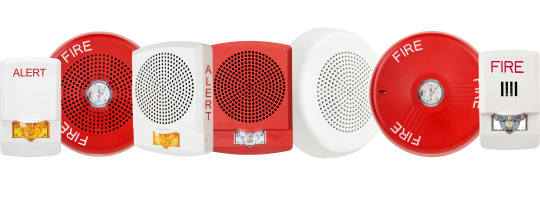
A Mass Notification System (MNS) is also known as an Emergency Communication System (ECS), and is a lot more than just an alarm system. The MNS was originally popular and widely used in military occupancies, although this type of emergency communication system quickly became popular and necessary to prevent mass casualties in many commercial, public and government facilities including offices, hospitals and school campuses. The Unified Facilities Criteria (UFC) a publication by the United States Department of Defense, outlines the criteria for a Mass Notification System. According to Section 4-021-01, which is the Design and O & M Standard of UFC, an MNS must have the capability to provide real-time information to all occupants and personnel of a building and the immediate vicinity of emergency situations. There must be a means to timely notify occupants of immediate threats and relay what people should do in response. The UFC requires any MNS to meet this capability with pre-recorded messages and the ability to give live audible emergency messages for notification and evacuation procedures. UFC also recommends a combination FAS and MNS, especially in new construction where fire alarm control panels meet both functions. Emergency Communication Systems requirements are also outlined in NFPA72, 2010, Chapter 24 which is titled: Emergency Communication System. Both the UFC 4-021-01 and NFPA72 Chapter 24 cover the installation standards, and functional criteria for an ECS or MNS. These publications were the launching pad for ECS in non-military facilities such as offices, hospital and schools.
Code Requirements for Mass Notification Systems
NFPA72, Chapter 24 (2010 Ed) outlines the details of an MNS as a system designed to protect lives by alerting people to the existence of any emergency situation, and communicating to them the necessary information to facilitate the appropriate action. NFPA72 also gives a similar description as the UFC to define an MNS as a system that is used to provide vital information with proper instructions to occupants in any building area, even outdoors, with clear and easy to understand voice communications and possibly combined with visual alerts such as signals, graphics, text, strobes or other methods of communication. NFPA72 goes further to describe ECS requirements and suggesting that integrating with a fire alarm system is beneficial. NFPA72, Chapter 24 also includes the minimum requirements for system designers, installers and facility mangers. The latest edition of NFPA72 also includes requirements for design and installation of ECS and MNS systems for commercial facilities considering an ECS. Chapter 24 of NFPA72 is divided into four sections: Performance based design alternative Command and Control Two-way communication One-way communication NFPA72 also requires that when testing system performance, a detailed risk assessment should be completed for both non-fire and fire emergencies. There are three specific areas addressed in the criteria for ECS design and installation: ECS systems in buildings, Wide-area notification and Distributed notification. In addition to NFPA72 and the UFC standards, facilities considering an MNS must also comply with the Americans with Disabilities Act (ADA), OSHA 1910.165, Employee Alarm Systems, and FEMA’s Outdoor Public Alerting System.
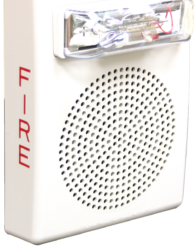
Components of an MNS
The three basic components of an MNS system as defined by the DOD’s UFC include: A “Giant Voice” system An autonomous control unit A notification appliance network The UFC states that the autonomous control unit should monitor and control the network system, and should also have consoles for local operation. Personnel in the building should be able to initiate the notification of either a live voice message or a pre-recorded message. They should also be able to send audible evacuation procedures or other instructions, send visual strobe notification, and/or text messages. Deactivation of fire alarm signals is necessary when delivering audible notifications to ensure occupants can clearly hear and understand the messages.
HRSS Provides Complete Solutions with Fire Alarm Systems and Mass Notification Systems
Combining your MNS with your fire alarm system brings many benefits to your building safety plan. When your MNS is combined with your fire alarm system, it will be tested regularly and maintained with your fire alarm system, significantly reducing any chances that your MNS would be in need of repair or in a fault mode. Fire alarm manufacturers today utilize the latest technology, with smart control panels and systems, and even Voice over IP (VoIP) to deliver voice messages anywhere in the world over the internet. Another advantage of combining an MNS with a fire alarm system is that you could have the pre-recorded messages from your MNS enhanced with flashing strobe lights to really get the attention of your occupants. Studies show that flashing strobes combined with audible instructions have a much greater impact on occupants that either notification delivered alone. For the most effective Mass Notification System, combine audible and visual notifications together. High Rise Security System is a leading fire alarm systems provider with vast experience in Mass Notification Systems required in commercial, public and governmental properties. Our systems can be found in offices, hospitals and campuses in and around the Chicago area. Contact us today to learn more about a combined MNS and fire alarm system to protect your property and the lives of your occupants. Read the full article
#fireandsafety#fireandsafetycompany#fireandsafetysystems#notifierfirealarm#NotifierIntegratedSystems
0 notes
Text
UL864 9th Edition and NFPA72 Guide Fire Alarm Contractors
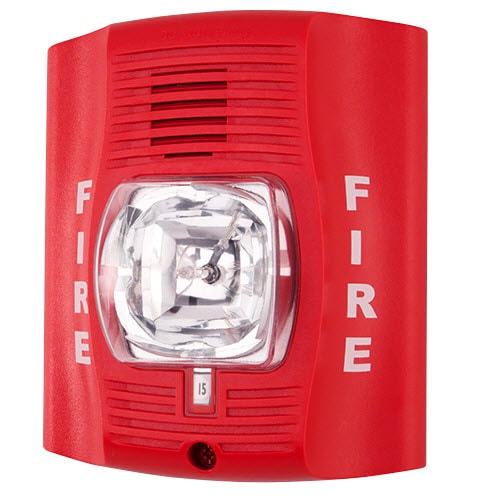
All fire alarm contractors should be aware of the requirements set forth in UL864, 9th Edition, for qualifying fire detection equipment as UL certified. Underwriter’s Laboratories (UL), is an American safety and certification company, recognized globally for examining and applying Certification Marks for products that pass their testing and inspection standards. UL864 is the Standard for Control Units and Accessories for Fire Alarm Systems, governing the fire protection industry worldwide, with the most recent ninth edition revised in 2008. UL864 is the most widely accepted regulation recognized globally, with the exception of Europe which adheres to regulations set forth by the European Commission.
National Fire Protection Association (NFPA) 72
UL864 follows the life safety code issued by the National Fire Protection Association (NFPA), NFPA72, the National Fire Alarm and Signaling Code. NFPA72 is the standard that details the latest provisions set forth for fire detection, fire alarm signals and requirements for emergency communications. NFPA72 also includes standards and regulations for Mass Notification Systems (MNS) utilized during weather emergencies, biological, nuclear and chemical emergencies and terrorist events and threats. NFPA72 is updated and managed on regular intervals, typically every three years, by a committee of industry and subject matter experts to incorporate technological changes. The most recent edition of NFPA72 was revised and updated in 2016. UL864 requires that all fire alarm equipment that was manufactured after 2005 must comply with NFPA72, 2002 revision. Manufacturers had until December of 2008 to comply with those revision.
UL864 Ninth Edition
UL864 Ninth Edition incorporates a minimum of four areas of NFPA72, and forced manufacturers of fire alarms to update all product lines so that they comply with NFPA72. Areas of focus in UL864 Ninth Edition include: Changing the scope of the standard itself Changes that make UL864 consistent with UL’s methods of testing products Changes that bring UL864 congruent with other UL safety standards Changes to make UL864 consistent with the current edition of NFPA72 The new standard with its expanded scope covers: NFPA13 Sprinklers NFPA15 Water Spray Systems NFPA16 Foam Water Systems NFPA17 Dry Chemical Extinguishers NFPA17A Wet Chemical Extinguishers NFPA92A Smoke Control NFPA92B Smoke management in malls NFPA2001 Clean Agent Extinguishing Systems These are in addition to the standards previously covered in UL864 Eighth Edition, which include NFPA12, 12A, 12B and 72.
UL864 Ninth Edition Applies to Fire Alarm Equipment Only
Fire alarm design and installation companies will not be affected by UL864 as this applies solely to the actual fire alarm equipment, with no impact on how fire detection systems are installed. Fire alarm design firms have been adhering to NFPA72 along with other various building codes, federal and local. An example is the response time for fire alarms to be ten seconds or less during a minimum of two cycles, this requirement is included into the equipment standard of UL864. Additional key requirements are as follows: Enhanced resistance to RF Interface Better synchronization of Notification Appliances Greater software integrity Broader programming requirements Updates in Supervision, Monitoring, Compatibility, Power transmission UL864 Ninth Edition made great strides in providing assurance and confidence of meeting and exceeding the most recent industry fire safety standards.
HRSS Provides Compliant Fire Alarm Equipment and Design
High Rise Security Systems is a leading fire, life and safety consulting firm providing system design, UL certified equipment, implementation, testing, repairs, maintenance and monitoring 24/7/365. We offer decades of experience in meeting all fire safety code regulations, and exceeding the bare minimum requirements to provide the best system possible no matter the building design. We are experienced at designing fire and smoke detection systems for all types of commercial properties including low-rise, high-rise, college campuses and medical complexes. We employ highly skilled design engineers experienced with all local, state and federal regulations to design the optimum fire system with AutoCAD software.
HRSS Provides Fire Extinguisher Service
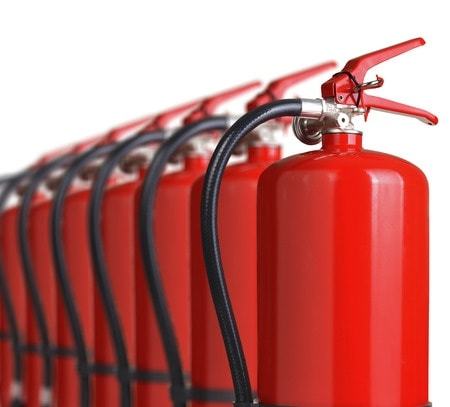
HRSS is licensed in the state of Illinois to provide portable fire extinguisher service for all fire extinguisher types. We provide annual fire extinguisher service, 6-year and 12-year maintenance, and all portable fire extinguisher services. High Rise Security Systems is experienced with all National Fire Protection Association standards related to fire alarm equipment, design, installation, notification and testing requirements. We work closely with building owners, safety managers and electrical engineers to ensure a compliant fire detection system that goes above and beyond actual code requirements, to provide maximum safety to building properties and occupants. UL864 Ninth Edition is a springboard for safer, better fire alarm equipment and products, providing confidence to building engineers, architects and owners that their fire detection system will meet the technological demands required of buildings today. High Rise Security Systems is a leading fire, life and safety company with decades of experience to ensure total compliance and safety for all commercial properties. Contact us today to speak with an engineer to learn more about how we can assist with your fire and safety requirements. Read the full article
0 notes
Text
STI Safety Technology International

(STI) makes a variety of items to prevent false fire alarms, vandalism and theft. In relation to daycares and schools a few specific products of STI’s are essential when installing or replacing a life safety system in the facility. The first one is the Universal Stopper. These are protective polycarbonate covers specially designed to protect a fire alarm pull station and prevent a false alarm. To use the pull station, you simply lift the cover. These covers come in many different options such as different mounts, waterproof or with an alerting horn deterring mischief use of the station. The second most important product of STI’s for a daycare center or school are the wire covers. These wire covers are made of steel wire coated in corrosion resistant polyester. They are designed to prevent damage or vandalism. Again, they come in a variety of styles and sizes depending on what you need to protect from accidental activation. Read the full article
0 notes
Text
Daycares

Much of our business comes from smaller installations which are equally demanding in their designs and installation. One of the most important of these smaller jobs are daycares. Daycares have many life safety regulations to meet and follow to ensure the safety of the children and staff such as complete automatic service detection. For example, for a daycare to be approved to operate in the state of Illinois not only do they have to be compliant with the Illinois State Fire Marshal but also with their local building and zoning departments. Their codes are adaptive of standards published in the Nation Fire Protection Association’s (NFPA) NFPA 101: Life Safety Code and the International Fire Code. These plans must be reviewed, approved and inspected by the local fire authority. Additionally, for daycare centers in commercial spaces or in homes, they require frequent inspections and reporting to the local fire authority. These are typically completed annually, but every jurisdiction has specific requirements. Read the full article
0 notes
Text
Enhance Campus Safety with Integrated Fire Alarm and Emergency Communication System
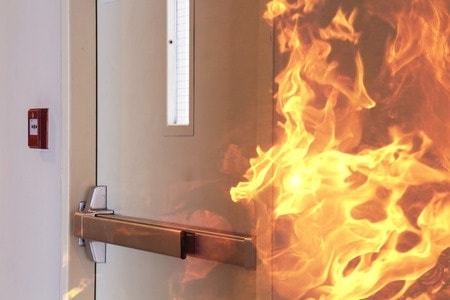
A Mass Notification System (MNS) is also referred to as an Emergency Communication System (ECS) with both terms used interchangeably to identify a system which provides real-time information to notify all occupants of a facility or campus and the immediate vicinity of emergency situations. The United States Department of Defense outlines necessary criteria for mass notification and emergency communication systems in the Unified Facilities Criteria (UFC) publication. Emergency communication systems must also comply with standards set by the National Fire Protection Association (NFPA), the Americans with Disabilities Act (ADA), the International Building Code (IBC), OSHA and FEMA’s Outdoor Public Alerting System. In our last post, Mass Notification Systems are Much More Than an Alarm, we outlined the main code requirements from the UFC and the NFPA, and the components of an MNS. Every school, college and campus must understand the local, state and federal code requirements of an emergency communication system, which are necessary but can seem overwhelming. Incorporating the assistance of a fire safety system professional early in the process will save time, money, and ensure adherence to regulations. High Rise Security Systems, HRSS, provides total code compliance including datasheets to assist with permit approval to commercial facilities and educational institutions in Illinois.
School and Campus Safety Risk Analysis
Prior to the design and implementation of an Emergency Communication System, a thorough risk analysis must be completed to identify threats most relevant to the unique campus situation. It is important to gather all relevant stakeholders which typically include: Facility owners and Board of Directors Facility safety directors and emergency management officials Security officials of the campus Facilities maintenance personnel Local first responders Fire alarm design professional Fire alarm system integrator Risk analysis must include potential threats relevant to the specific campus. For example, schools and campuses located in the Midwest should include an emergency plan with instructions on how to respond during tornadoes. Whatever your unique situation, including all relevant stakeholders and school professionals in the process will help to identify all threats so that the selected team can prioritize them and determine where to focus attention to mitigate risk. While all steps and security measures should be taken to prepare for natural disasters and to prevent the intrusion of harmful individuals, risk analysis must also include a plan for when these measures fail. How will you let the occupants know that a situation exists and the best way to respond? How will you communicate evacuation procedures or changes in procedures for certain areas? Campuses benefit from a multifaceted approach, with life and safety systems that provide emergency communication of unique messages that can change with the situation, allowing facilities to deliver the right message, at the right time, to the right people. Emergency communication systems can deliver notifications to occupants in various ways, which may include: Prerecorded or live voice announcements delivered inside or outside the building Digital signs where a warning could be displayed and updated Social media alerts Text messages Texting alerts are highly effective as they are quickly seen on most devices and are hard to miss. Digital signs, social media and text alerts are also beneficial in loud arenas like sporting or music events. Strobe lights can help to grab the attention of the listener and are proven to make an audible message more effective. Risk analysis must also include identifying the situations in which the ECS would be deployed, and the best methods for communication to reach the intended occupants. Once the risk analysis is complete and all participants agree on the plan, a fire alarm system design professional can provide guidance on the proper system design and integration.
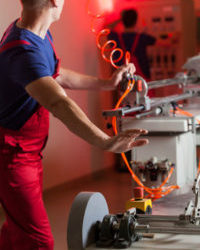
Involve a Fire Alarm System Professional Early for Best Results
High-Rise Security Systems, HRSS, is a qualified fire alarm system design and integration professional, experienced in working with risk analysis teams to develop and enhance an effective Emergency Communication System and overall fire, life and safety system. Best results including lower costs, adherence to all codes and regulations and a smooth installation of a high-performing, reliable ECS and fire safety system occurs when incorporating professional fire and safety system consultants early in the risk analysis process.
Emergency Communication and Fire Alarm Systems
Emergency Communication Systems are required to contain features similar to fire alarm systems which include: Survivability Supervision Backup power Intelligibility Consistent maintenance and testing Some PA systems may offer ECS services, but many lack these mandated requirements. Working with a licensed fire alarm system professional ensures the adherence to all code requirements with approved equipment and proper placement of all sensors and devices. Meeting code regulations, however, is only one part of the overall safety system design. A timely and organized evacuation in time of emergency is a critical consideration of all emergency communication systems. An experienced fire and safety system professional can ensure that safety and evacuation measures are put in place that go above and beyond code requirements to provide additional safety measures relevant to your unique building structures. Integrated ECS and fire alarm systems offer both public and private mode signaling, with web- based systems designed to prioritize hazard announcements to targeted audiences. High Rise Security Systems provides safety system design for protection in educational institutions from fire, natural disasters and intrusion which must be the highest priority of all educational facilities. HRSS is experienced in protecting several educational institutions in Illinois including Chicago public schools, the University of Chicago, the Loyola school of medicine, the University of Illinois at Chicago and many other campuses. Including the fire system professionals at HRSS in your advanced planning phases will minimize costs while providing a thoroughly developed, code compliant and effective fire and safety system. Read the full article
#commercialfirealarms#firealarm#firealarmdesign#firealarminspection#fireandsafetysystems#firesafetysystem#integratedsystems
0 notes
Text
I am Your Fire Alarm Technician.

When I arrive on site and enter your building I have your safety in mind. My signature on any paperwork does not come lightly. I am a professional life safety technician and I will not leave or sign any certificates unless your systems are perfect and ready for use. I am a believer in Life Safety and the services we provide. The systems I sell truly play a critical role in protecting occupants in your buildings. The systems we sell and service are your first line of prevention in keeping peace and safety to the people that live, work or visit your building. I help first responders by providing pinpoint information and ensure a safe environment so that first responders can work with minimal risk to their safety. The systems I test and service will summon the fire department within seconds, advising them of a potentially dangerous event before a circumstance becomes out of control.
Your Safety is My Main Concern
When I enter your building, your safety is my main concern. My first objective is to ensure that the installed life safety systems are performing as intended. I will provide needed feedback to you of any deficiencies or suggested updates to be current with the most recent codes or trends. My years of experience, factory training, life safety seminars, NICET testing and industry trade publication reading provides me insightful information which is helpful to you in determining whether possible upgrades to your life safety systems are warranted.
HRSS is a Team of Life Safety Enthusiasts
I am one of many. My fellow coworkers and all office staff support this team effort to provide the very best protection for you and your building. The organization for whom I work is committed to Life Safety. We provide UL Listed products, know how to meet code and optimize opportunities to maximize protection while offering Life Safety features within financial realisms. NFPA72 is clear that any fire alarm modification in hardware or programming requires functional testing. I will not leave or sign a certificate if I have not personally tested and witnessed the operation of any hardware or software additions and modifications. When I test with building or fire officials I have pretested and will make ready Certificate of Completion in hand verifying proper system functions. So, count on my ability and have assurance that my verbal and written testament confirms your system is 100% ready for use. Contact HRSS for all your fire, life, and safety system needs. Read the full article
0 notes
Text
Low-Frequency Devices

Low Frequency notification appliances provide a life-saving value to sleeping occupants. Through NFPA funded research, it has been found that the 520 Hz square wave signal is the most effective at waking sleeping occupants. Six different signals were tested, and the 520 Hz had the highest waking rate of 92 percent. Since 2010 low frequency 520 Hz appliances have been fully adopted into the NFPA requirements. The compliance date for the requirement of low-frequency devices was set to January 1, 2014, giving the industry a five-year window to develop product standards. Requirements that took effect January 1, 2014 state that audible fire alarm signals within sleeping spaces with the purpose of awaking occupants must be low frequency. Such as hotels, dormitories, multi-family residents but not hospitals or nursing homes because the communication system is meant to alert the staff which then notifies patients. Household fire alarms have also adopted the 520 Hz frequency. Read the full article
0 notes
Text
Commercial Fire Alarm Inspection Recommendations from NFPA


Commercial properties are required to have regular inspections conducted on their fire alarm systems and components to ensure safety systems are operating as intended. If your fire and safety alert system experiences a malfunction or is not ready in case of emergency, it is basically useless and could provide no early warning whatsoever. For this reason, The National Fire Protection Association, NFPA, recommends that commercial properties have their fire detection systems tested at least twice per year, with testing of all functional components once annually.
Fire Alarm Inspections Provide Valuable Service
Fire alarm inspections save property owners money in the long run as insurance companies must see evidence of sufficient fire and safety systems when underwriting a policy. Some insurance companies offer discounts for safety systems that are proven to be maintained and fully operational. The local Authority having Jurisdiction (AHJ) which could be the local Fire Marshall, also requires inspections recommended by the NFPA for building permit approvals. It can be quite costly to reinstate permits that have been revoked or denied. Working with an experienced and licensed fire safety consulting firm will reap big rewards for building and property owners.
High Rise Security Systems Offers Total Compliance to Fire Safety Codes
High Rise Security Systems offers experienced and licensed fire safety consulting services to commercial property owners all over the Chicagoland area. We ensure that your system is operating in “All Systems Normal” condition to provide early warning in case of emergency, with proper alarm notifications aiding evacuation procedures to saves lives and prevent property damage. Our field trained technicians are licensed in the State of Illinois and certified to NICET, the National Institute for Certification in Engineering Technologies. We service your fire detection system with only UL listed quality components providing ongoing inspections and maintenance with qualified and experienced technicians. HRSS also provides fire system design services, identifying applicable networking zones, placement of detection sensors and evacuation alert systems including audible and visual alerts where required. High Rise Security Systems, HRSS, provides experienced and licensed fire and life safety system services for all commercial building structures, including high-rise buildings, low-rise structures, mass complexes such medical facilities and hospitals and college campuses. HRSS is an experienced and licensed fire and life safety system consulting firm providing comprehensive services including fire alarm system design, UL listed equipment, professional testing, inspection, maintenance and reliable monitoring 24/7/365. Contact us today to learn more about how we ensure your building is compliant to all regulations and operating at maximum performance to protect your occupants and property. Read the full article
#commercialfirealarms#detectionandnotificationsystems#firealarm#firealarmsystems#fireandsafetysystems
0 notes
Text
The Importance of End User Training for Security Systems

Fire alarm and life safety systems have evolved with technology, offering sophisticated smart systems which provide great benefit to building owners. Along with valuable benefits comes the responsibility of training end users to educate responsible personnel on how to use the fire and security system effectively. Building owners and business management must ensure that safety personnel know how to respond to alarm and maintenance alerts. The new technology of today is no longer an inflexible, closed-circuit system consisting of cumbersome proprietary equipment. Fire alarm and life safety systems today operate on IP networks with Wi-Fi technology, utilizing sophisticated fire, smoke and gas detection systems. High-tech security cameras incorporated with cloud-based data storage systems provide immediate access to live footage from anywhere including mobile devices.
Account for Training in Your Emergency Action Plan
Building owners and managers must account for training in their Emergency Action Plan (EAP), which must be updated with any additions or changes to the fire alarm system. When upgrading equipment be sure to include training for all end-users to ensure your system will provide the intended protection. Fire alarm systems are a critical component of all commercial structures, designed to save lives and protect property. Part of your EAP should include how and where to access basic information on your fire alarm system. This is critical to end-users, first responders and fire alarm technicians. Building managers and end users must be trained on system operation, protocol for responding to alerts, and how to assist with evacuation procedures. First responders react to alarm notifications from smart systems which help identify the source of a fire, pinpointing the exact location down to a particular room on a specific floor. Fire alarm technicians have the important responsibility of ensuring your safety system is operating to its fullest potential. Access to system information is helpful to identify the specific location of system malfunctions.
High-Rise Security Systems Offers Licensed Fire Alarm Inspections
High-Rise Security Systems, HRSS, offers licensed fire alarm inspections from field trained fire system specialists. HRSS has decades of experience in working with building and electrical contractors to ensure total code compliance of your fire and life safety system. High Rise Security Systems is a leading fire safety consulting firm offering comprehensive services throughout the Chicago area. We provide fire alarm system design, inspection, testing, maintenance and monitoring 24/7/365. Contact us today to speak with an experienced fire and safety system expert to learn more about our fire, life and safety protection services. Read the full article
#detectionandnotificationsystems#firealarminspection#firealarmsafety#fireandsafetysystems#FireSafety
0 notes
Text
High Tech Fire Alarm Systems Offer Advanced Features
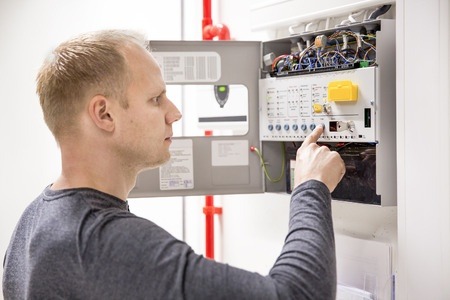

Fire alarm systems today are sophisticated and smart, offering advanced features to prevent disasters and prepare for emergencies with early detection and warning. Fire detection and notification systems utilize advanced technologies to detect fire, noxious gases and smoke. Intelligent initiating devices and sensors measure the amount of gas in the atmosphere, with sensitive measuring chambers to detect even minute amounts of gas or smoke.
Addressable Fire Alarm Systems Provide Networked Coverage
Integrating fully addressable fire alarm control panels gives specific, detailed data on the source of a fire pinpointing the location down to the particular room on a floor of high rise buildings. Fully integrated and networked systems can be controlled by a central control unit for automatic functions such as opening all doors during an evacuation or even monitoring elevators with video. Notifier® fire alarm panels provide Digital Voice Command for clearly communicated evacuation procedures. The advanced technology available today in high tech fire alarm systems provides early warning to prevent disasters and save lives.
High Rise Security Systems Offers High Tech Fire Alarm Systems
HRSS is a leading fire and safety systems consultant, designer and provider of code compliant systems designed to protect your property and most importantly, save lives. Fire safety systems must be a top priority for building owners, with code compliance only one part of a well-designed safety plan. We go above and beyond mandated requirements to provide a custom designed fire alarm system based on your unique building structure or structures to protect people and property. We offer decades of experience with all fire code regulations in the city of Chicago, the State of Illinois, and all National Fire Protection Association, NFPA, codes and standards.
Fire Alarm System Design Services
HRSS is a fire and safety consulting firm, offering comprehensive services aimed to provide total protection from fire, natural disasters and threats. We develop a detailed, custom design of your building or buildings with CAD software, identifying locations for sensors, exits, audible and visual alerts, all equipment and components. We provide ongoing maintenance, testing and inspections to keep your system in optimum condition and ready to respond to emergencies. High Rise Security Systems offers high tech fire alarm systems which provide sophisticated monitoring and reliable protection, proven to save lives and property. We offer comprehensive fire alarm system designs utilizing UL listed equipment, total code compliance and ongoing services including monitoring 24/7/365. Contact us today to learn more about our fire and safety systems proven to save lives. Read the full article
0 notes
Text
Vantage Oak Park

Downtown Oak Park, IL has made major changes over the last few years and High Rise Security Systems is proud to have been a part of them. Downtown Oak Park has added over 1,200 residences and 60,000 square feet of retail and office space. In the process hundreds of short-term parking spaces have been made and a new skyline. The first project to break ground Vantage Oak Park opened Fall 2016 which houses Edward-Elmhurst Immediate Care and HRSS’s life safety system. HRSS also took on the task of making sure The Emerson, which is a large complex consisting of the north and south building, was fully equipped with a life safety system. Major retailers like Target and Coopers Hawk have already moved in. Read the full article
0 notes